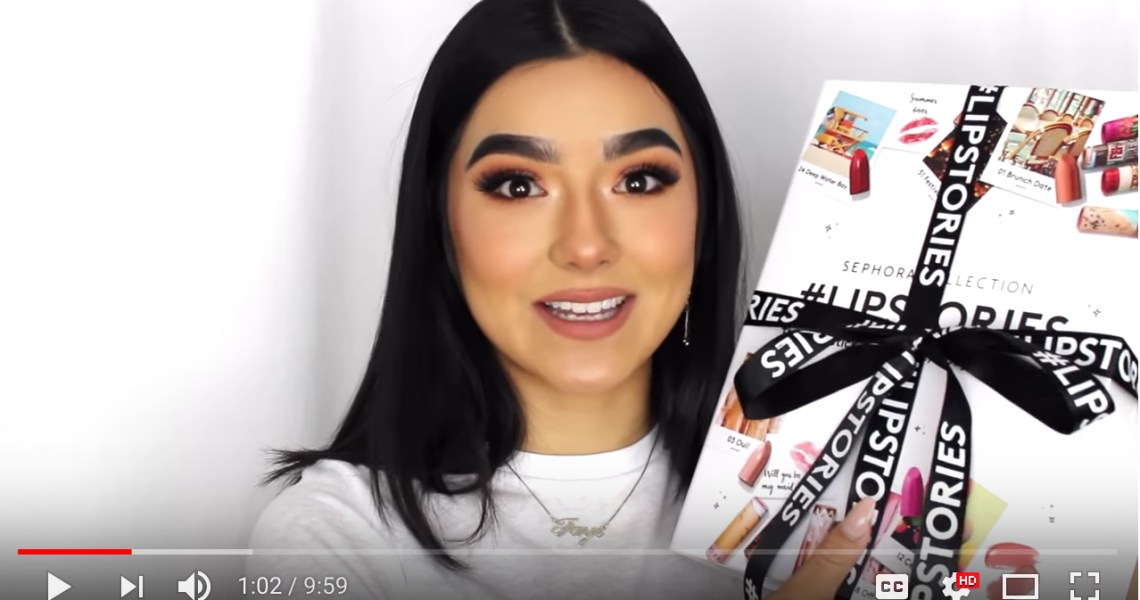As shoppers become increasingly conscientious about supporting brands they can relate to and respect, brands are placing more emphasis on communicating their brand stories at every possible customer touchpoint, from their social media posts to their retail channels.
According to a recent survey of 149 fashion and beauty brand executives from Glossy+’s proprietary research panel of industry insiders, 42 percent said YouTube will become a more important piece of their overall marketing strategy in 2019. Of those respondents — of which 59 percent identified as being from a beauty or wellness brand, and 41 percent from a fashion brand — 44 percent owed it to that, compared to other marketing channels, YouTube offers more opportunity to share the brand’s story.
Thanks to the popularity of tutorials, YouTube has become a key destination for beauty fans and, consequently, beauty brands. According to Statista, between 2016 and 2017, views of beauty-related content on YouTube grew 60 percent, from 55 billion views to 88 billion. Brands now account for 39 percent of beauty content views on the platform. What’s more, 76 percent of consumers report they have purchased a product or service after viewing a video, according to a report from cloud service provider Brightcove Inc.
And fashion brands are seeing the platform’s value, as well. Matt Scanlan, the co-founder and CEO of direct-to-consumer fashion brand Naadam, said his company relies on a combination of YouTube, Facebook and Instagram to tell its story, which is at the center of its marketing strategy.
“Storytelling is our only marketing strategy, and honestly, that should be the only thing that matters,” said Scanlan. “The best brands communicate values across substantial and poignant storytelling motifs. So every year, we sit down and think, ‘What story can we tell, and how can we tell it?’”
He said producing the video content that then tells that story and supports company development is one of Naadam’s largest investments. As for the videos’ content, Naadam’s team focuses on consistency in tone and vision, which can make or break a viewer’s perception of the brand, Scanlan said. “The consistency, for us, is authenticity and humor,” he said. “It’s one thing to tell people you’re funny, it’s another thing to show it.”

Jinal Shah, founder of brand consultancy firm Shah Menon & Co., echoed Scanlan, saying that having an authentic brand story is critical to establishing trust and credibility, but the story alone is not enough. “It also has to be communicated creatively and frequently, and consistently contextualized in culture,” she said, calling out Everlane, Glossier and Net-a-Porter as brands currently doing an excellent job of communicating their story across products, content and experiences.
That new importance of weaving the brand’s mission and story into every element of the brand experience is influencing brands’ choice of retail channels. Of the 54 percent of Glossy+ survey participants from a brand not currently selling on Amazon, 32 percent owed it to the fact that the site’s look and feel are in conflict with their own branding.

“Digitally native companies should sell in stores that reflect their brand and bring ‘life’ to their brand identity,” said Jonathan Shokrian, founder of direct-to-consumer underwear brand MeUndies.
But despite Amazon’s bad reputation for boxing out brands’ individuality, the marketplace is not exactly a lost cause for brands hellbent on consistent messaging, said Shah.
“It is not accurate that Amazon offers no room for storytelling,” she said, explaining that brands do have less control over how they’re represented on the platform, but brands that know how to leverage Amazon are finding ways to insert their stories successfully. “You have to remember that, as a brand, you are courting a shopper on Amazon, and as such, your content and storytelling aspects have to be different from what they’d be on Youtube or Instagram, or any other channel.”




